Nissan Leaf Tekna


- Are friends electric? Nissan Leaf joins the fleet
- Winter motoring in a electric vehicle
- Nissan Leaf vs Rivals
- What is the real world range of the Nissan Leaf?
- Five things no-one ever tells you about owning an electric car
- Why is the Nissan Leaf EV app so bad?
- Nissan Leaf niggles mount up
- Seven things we love about the Nissan Leaf
- Explained: What is an e-pedal?
- What's the best way to charge my Nissan Leaf at home?
Are friends electric? Nissan Leaf joins the fleet
Can you make the Leaf work if you don't live in the city? We find out

Date: 6 December 2018 | Current mileage: 7428 | Claimed range: 160 | Actual range: 120
As the editor of Honest John Classics, one of the questions I get asked a lot is what car is a future classic. People are always amazed when I suggest an early hybrid like a Honda Insight – rather than a Ferrari or a Porsche.
But think about it for a minute. These cars are at the forefront of a major revolution and – last time I checked – gamechangers were a pretty decent investment. Audi Quattro, Mini, Volkswagen Golf GTI – all names of cars that broke the mould and now regularly make strong money at auction.
And there’s no reason the Nissan Leaf can’t join that roll call… just as long as Nissan does something to capture the public’s imagination. Which is strange, considering that Nissan gave us the fire-breathing Skyline and once created a twin-engine Micra. Just for fun.
With the general public currently ignoring EVs in the hope that they’ll go away (a strategy echoed by the Government, despite promising to ban sales of new petrol and diesel cars by 2040), I was keen to find out if it was possible to run one every day as a family car.

So say hello to the latest addition to the Honest John fleet – a Nissan Leaf. We’ve gone for the top of the range Tekna trim (although this will be superseded in 2019 with a new model that adds more range and power).
Trim wise, it’s got everything you need – alloy wheels, automatic LED lights, air-con, cruise control, lots of things with acronyms, intelligent braking, self-parking and our favourite a Bose premium sound system.
With a list price of £32,890, it’s definitely expensive when it comes to family hatchback – but compared to the similarly priced all-electric Volkswagen Golf that we ran, it’s actually a much smarter choice.
Factor in the Government’s Plug-in Car Grant (PiCG) and you can currently save £3500 on the list price, taking it down to £29,390. So if the figures work for you, follow our upcoming reports to find out whether or not you can really use an electric vehicle as a full-time family car.
Winter motoring in a electric vehicle
A drop in temperature dents the Leaf's range

Date: 20 December 2018 | Current mileage: 7997 | Claimed range: 168 | Actual range: 110
As we head towards winter, we’ve got a great chance to find out how the Leaf performs during a cold spell. Most obviously, we’ve seen a dip in range from the battery. Official figures quote 168 miles on a charge for the Leaf, but we’ve never seen it go above 150.
And as the car has gathered information from our driving style, this tends to sit at about 130 (slightly more if you run it in eco mode full time). That’s not to say I’ve got a heavy right foot – more to do with a non-EV friendly commute.
See, there’s a weird thing that happens when you drive the Leaf – you realise that not all range miles are created equal. For example, an 18-mile trip into Cambridge in slow moving and/or stop-start traffic uses only about 15 range miles.
But a 30-mile trip on a clear motorway at 70mph uses up close to 45 range miles. That’s because the driving in stop start traffic allows regenerative braking – that’s where the car harvests the energy generated by slowing down and feeds it back into the battery.

And despite the Leaf’s ‘leisure battery’ being employed to run things like heaters and lights, winter has definitely taken its toll on the range. For us, that’s not too much of a concern – the car gets charged every night as it’s impossible to do more than one day’s commute on a charge.
What’s slightly more concerning about the Leaf in the winter is power delivery and handling. One of the things we love most about the car is power delivery – no turbos, no gears… just put your foot down and off you go.
But the low rolling resistance tyres offer very little grip (to maximise economy) which means that anywhere below five degrees and you’ll spin the wheels. The car is also easily upset and doesn’t communicate well to the driver what’s happening underfoot.
After hitting a patch of black ice, I was the last person to find out as the steering remained as weighted as ever (rather than going light) and as the car slid I had to work extra hard to get control back as the slightest application of power caused the tyres to spin. And not in a fun way – my old Primera handled better (and that handled like a sack of spuds).
Nissan Leaf vs Rivals
How does the latest Leaf stack up against its electric rivals? We find out

Date: 3 January 2019 | Current mileage: 8201 | Claimed range: 168 | Actual range: 110
If you’re after an all-electric family car in 2019, you’ve got plenty of choice. The Jaguar i-Pace, Kia e-Niro, Hyundai Kona Electric, Tesla Model S, Audi e-tron, and the Volkswagen e-Golf are all ready to give the Nissan Leaf a run for its money.
We can’t help but think the Leaf rested on its laurels a bit while it had the sector to itself. Certainly the Volkswagen e-Golf that we had on long-term test last year was the better car. Every family is different, though, and we found it hard going getting the kids and their associated paraphernalia in the Golf.
We’ve already reviewed the offerings from Kia and Hyundai and given them glowing reviews. HJ called the e-Niro a ‘gamechanger’ while new cars editor Andrew Brady felt confident that the Kona addressed the main stumbling blocks of EV ownership, namely list price and battery range. Oh, and both models proved fun and engaging to drive.
For a car company that gave us the GTR and has been at the forefront of EVs for the past five years, we’re a little shocked. Nissan often tell us that the Leaf is the world’s best-selling electric vehicle… but perhaps a lot of that is to do with the fact that it’s the only EV that’s affordable and in mainstream production. It’ll be interesting to see if smaller manufacturers like Kia and Hyundai can meet consumer demand, especially as the Kona electric has sold out for 2019.

But while the Leaf could be better, there are plenty of things it does well. Unlike the Golf, for example, there’s a light when you pop the plug-in flap, which makes ‘filling up’ at night much easier. And then there’s the seats. Developed with the help of NASA (we’re not even joking), the zero gravity seat takes its name from the neutral position our spines assume in… yep, you guessed it... zero gravity. Consequently, the Leaf’s seats give continuous support – across 14 different points along your back. The results? A mighty comfortable ride.
We’d like to have seen a bit more of this ergonomic mindset applied to the interior. Our first impressions of being behind the wheel are that there a lot of buttons. Buttons for steering assist, eco mode, heated seats, heated wheel, charge timer (on/off), charge flap, audio, media, nav… and that’s before you include all the buttons on the wheel.
And the infotainment system can be a bit clunky compared to, say, the slick system of the Volkswagen Group. Over time, we’ve got used to all the buttons and have settle into the groove of using Apple CarPlay, rather than the inbuilt system.
One niggle we’ve noticed is the dash display, which doesn’t seem to remember how you set it (not that there’s that much you can do with it). But what is frustrating is that every time you engage cruise control it uses that screen as its current setting. Not too bad, I guess, but our personal preference is to have the speed displayed as a digital read out because getting comfortable means the steering wheel is low down and obscures the needle on the speedo.
What is the real world range of the Nissan Leaf?
We get to grips with coping with the Leaf's limited range on a daily basis.
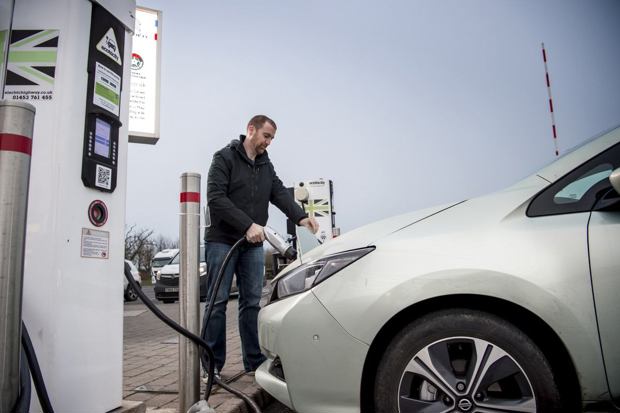
Date: 17 January 2019 | Current mileage: 8201 | Claimed range: 168 | Actual range: 110
When it comes to electric vehicles, there are two big questions that would-be owners want answering. The first is how quickly do they charge up? The second is how quickly do they run out of charge. The unspoken third is 'Can I charge them in the rain?' Obviously, we can’t speak for all drivers and cars, but we can give you a breakdown of our own personal experience.
First up, a little bit of background. Our daily commute is about 70 miles a day, with the first 15-minutes being stop-start traffic dropping the kids off at school, then 20 minutes of motorway driving, before a final five (sometimes 10 minutes) on A-roads with a bit of overtaking lorries up hill.
Why is this important? Simply because the answer to the two questions at the start will depend entirely on how you’re driving and how you're planning to charge.
While our daily commute is well within the Leaf’s official range of 168 miles, not all range miles are created equal. For a start, that figure of 168 is more like 140 miles. So a 60-mile commute should see us return home with more than 50% battery, making it possible to go two days without charge.

Fast charging socket on the left, domestic socket on the right.
But this isn’t possible, for two reasons. The first is that we often return home with less than 50% battery (more like 45%). That’s because, as a rule of thumb, if you’re going over 60mph you’re going to use more than one range mile for every actual mile you cover.
Our personal worst was a 60-mile round trip, three up with luggage and running a touch late. We left home with 85% charge and returned with just 3% with Eco mode kicking in for the last 20% of the battery’s charge.
The second reason we have to charge every night is that it simply isn’t possible to refill the battery from almost empty ‘overnight’. Plug-in a near-empty Leaf to a domestic 3kw three-pin socket and realistically you’re looking at a charge time of more than 16 hours.
Use a 40kw fast charge at the services will give you about 70-80% charge in 45 minutes. Good on paper, but our local fast charger went through a period of being broken. Quite what you’re meant to do in those situations is beyond me – you can’t just nip to the next Shell garage down the road… our next nearest quick charger is 40 miles away.
Based on this evidence, we'd say it's more than possible to run an EV on a home charging point if you have a short commute or do around 6000 miles a year. Remember, driving in traffic around town is really where EVs are at home. Oh, and yes, you can charge them in the rain.
Five things no-one ever tells you about owning an electric car
Baby wipes, free electricity, judgemental apps and other Leaf owners - Keith reflects on three months in an EV.
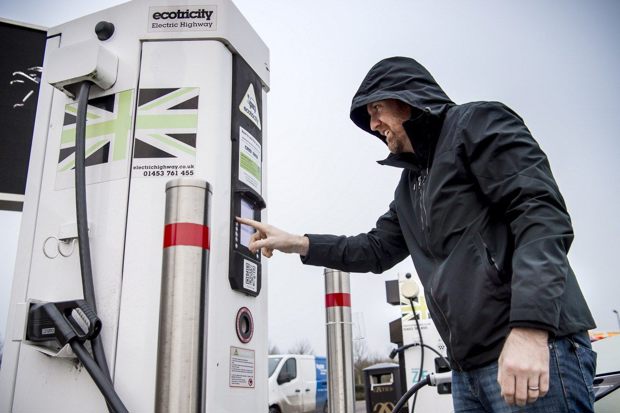
Date: 14 February 2019 | Current mileage: 8989 | Claimed range: 168 | Actual range: 110
We’re constantly fed a stream of images and information aimed at making us believe electric cars are the future. Make no mistake, electric cars are great. They offer instant acceleration without having to mess about with gears. It’s the kind of acceleration that make you feel like you’re in a Ferrari.
They’re also way more economical when it comes to a pence-per-mile running cost comparison. Every car (and driver) is different, but last month we covered 891 miles in our Leaf costing us just £35 in electricity.
Most importantly, they’re zero emissions – no small thing when you remember 40,000 deaths every year are linked to air quality. And then there’s cost savings and incentives on offer – the government grants, the ultra-low emission zone, congestion charging exemption, no VED to pay, discount parking permits…
But there are some serious downsides to EV ownership (apart from the obvious things like not being able to do high-mileages on a single charge). So here are five things we’ve learnt in our three months of living with an electric car.

One. No one ever tells you that your boot will be a write off. Our Leaf’s is covered in tangled wires and muddy charges. Unlike some its rivals, the Leaf comes with storage bags for the leads and a couple of storage pockets in the side of the boot… but most of the time leads just get thrown in because they’re a muddy tangled mess.
Two. You’ll need a constant supply of latex gloves, baby wipes and hand cleaner. Why? Because every time you charge up either at home or at charge point, you’ll be handling leads that are covered in muck. And remember, there’s no nice canopy over the charge point like there is at the Shell garage.
Three. You’ll have apps and accounts coming out of your ears. An app for your car, an app for various charge points, an app showing you the charge points across the UK. And they all judge you. The Nissan Leaf app, for example, constantly reminds you that you’re not good enough. Specifically, I’m ‘below average’ because I don’t drive economically.
Four. Sometimes you get free charge. Arriving at our local Ecotricity fast charge is a lottery. Sometimes it’s just not working, leaving you panicking about if you’ll make it home/to the next charger. Other times, someone’s parked their diesel Ford Transit in a bay. Occasionally, we find ourselves in a Leaf shaped traffic jam. But sometimes, just sometimes, we arrive and it’s broken and therefore dispensing free electricity.
Five. You have to talk to people. Pull up at a petrol station and fill up your Focus and no-one interrupts you. Not so in a Leaf. Sometimes you have to talk to other Leaf owners, who are all better at driving their EV than you, sometimes it’s just random members of the public who want to what it’s like owning an EV. Either way, I can’t multi-task so invariably I mess up the app or the buttons on the charge point and have to start again.
Why is the Nissan Leaf EV app so bad?
These days, is a car only as good as its app?
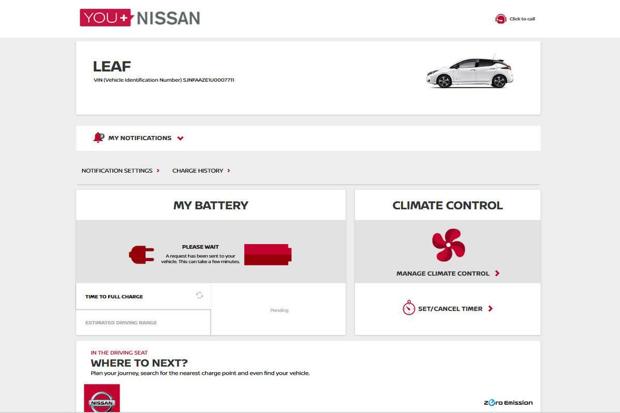
Date: 28 February 2019 | Current mileage: 9293 | Claimed range: 168 | Actual range: 110
Electric vehicles are at the forefront of technology. Some manufacturer have embraced this aspect of their cars – offering selection of cutting edge tech to give their cars a youthful, fun factor that you don’t get with ‘the old guard’.
Tesla is particularly good at this. Its cars (or rather its cars’ software) offer ‘Easter eggs’ – hidden, undocumented bonus content that users have to discover. There’s the Rainbow Road autopilot display, the Mars Rover GPS, and a trick where the car will put on a miniature light show will recharging.
We’re sure that the always-serious Nissan turns its nose up at these, but it makes the point that EV owners are handy with a smart phone. Sadly, it’s a point that the Japanese car maker seems to have severely neglected.
Don’t get us wrong, we weren’t expecting a holiday light show – we’d just like an app that works. If you’re wondering what sort of things you can do in the app, well you could: check the car’s battery charge, start/stop the charge, check the cabin temperature, put the heating on… all kinds of handy stuff.

You can set a charge and heating timer to run at certain times and on certain days. But what about when you unexpectedly have to go out and can’t be bothered to get cold and defrost the car? There’s an app for that.
But Nissan’s app is so slow that by the time you’ve found your coat, got the de icer, got your boots on, started the car, turned the heating on, put the heated steering wheel and seats on, broken the scraper, dug out a new one, and got the ice off, the app will still be trying to log you in.
And if that’s not bad enough, the app also tells you lies. Several times we’ve logged into to be shown wildly inaccurate info – 88% charge and a 212-mile range? I don’t think so. Sometimes, you don’t get any information at all – just a series of dots and dashes. But the only Morse code I know is dot, dot, dot, dash, dash, dash, dot, dot, dot. It’s the same if you try and log in via the desktop. Slow, cumbersome and frankly just not good enough.
Perhaps the most frustrating thing is that it struggles to cope with two users. Heaven forbid that both you and your partner should actually want to log in and check the range. Poor show, Nissan.
Nissan Leaf niggles mount up
We reflect on some of the more challenging aspects of running a Leaf
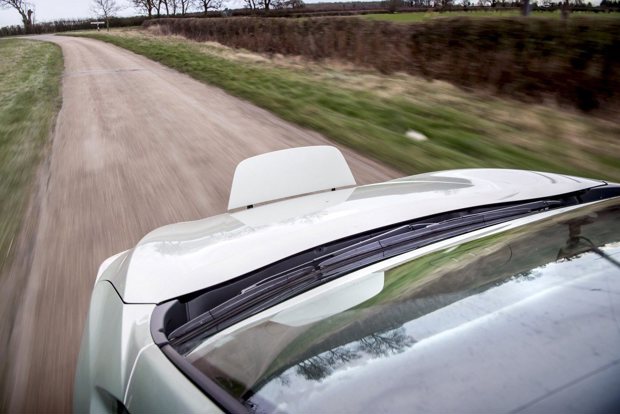
Date: 14 March 2019 | Current mileage: 9444 | Claimed range: 168 | Actual range: 110
Let’s get one thing straight – we’re big fans of the Nissan Leaf. Over the past three months we’ve used it daily with no major problems. But it’s not a perfect car and part of the purpose of our long-term test reports is to flag up issues that you don’t really get to find out about unless you live with the car for a while.
We’ve talked about getting our hands dirty and having a messy boot, but our car’s boot is compromised in a slightly different way, too. Our car has the optional sub-woofer just bolted to the boot floor... because where else would you put it? Um...
And we’ve also discovered another quirk. You have to properly shove the charging flap down like you were in a bar fight – otherwise it just pops up again. It’s happened several times and each time it’s popped up when the car is doing 70mph on a dual-carriage way. Obviously this is going to impact aerodynamics and economy, and you also run the risk of the flap coming off and hitting the windscreen (or another driver). Not good. Not good at all.
But the biggest bugbear for us is how intrusive the rear-view mirror and all the sensors are. They’re mounted quite far forward on the Leaf’s windscreen and they really get in your way. It’s a problem compounded by the car’s rather chunky A-pillars, which make pulling out at a T-junction harder than it should be.

Sensors and rear-view mirror obscure the driver's view.
The driver assist systems are also very intrusive. If you go to change lanes on a motorway where you’re the only car (for example if you’re filtering on or off) the lane keeper will not only buzz but also hit the brakes because you didn’t use the indicator (even though there was no other driver to indicate to).
We’ve also experienced the emergency forward brake seeing ‘ghosts’. This happens regularly when we’re going home through town along a tightly curved road that has cars parked along both sides. As the road tightens, the sensors think the parked car is an on-coming vehicle and hits the brakes.
Other users have also reported problems with covering long-distance journeys in the Leaf where more than one 40-minute fast-charge is required. Essentially, the software slows the fast charge to protect the battery because the system is hot, which means that the second charge can take up to two hours.
Despite these niggles, we think the Leaf is a good car and we’ll focus on some positive points in the next update.
Seven things we love about the Nissan Leaf
There's plenty to like about the new Leaf. Here are just a few highlights.
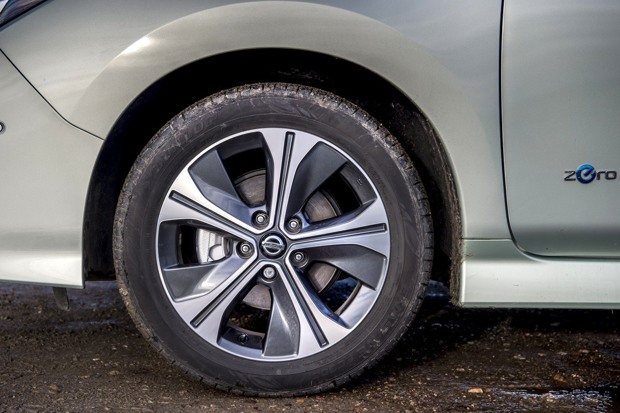
Date: 28 March 2019 | Current mileage: 9998 | Claimed range: 168 | Actual range: 110
The Nissan Leaf is one of those cars that pushes the boundaries. For most would-be buyers, cars like this are easy to criticise – but there’s actually a lot to love. True, it’s not without its niggles but we reckon the good will easily outweigh the bad for most potential owners.
First up on the list of stuff we like is the powertrain. While the the 110kw engine isn’t super powerful, it does offer 320Nm of torque – which is plenty. And, thanks to the fact you don’t have to wait for the revs to rise or fiddle about with gears, that power is good to go whenever you need it. Such immediate power delivery makes driving the Leaf entertaining and enjoyable rather than dull and boring.
Also on the list of positives is the ProPilot system. This includes the e-pedal system (which we’ll cover in a separate update) as well as clever cruise control and reversing tech. In a nutshell, it takes the stress out of driving as it’ll keep you in your chosen lane at a safe distance from the car in front and makes stop-start traffic a breeze. It’ll also park the car for you... although be warned that this last aspect can be quite slow and tedious.
Much more exciting is the fact you can use the charge in your Leaf’s battery to power other fun stuff. Like your house. Sure, it’s all a bit Tomorrow’s World, but the logic is sound. It means you can put the energy you’ve recovered back into the grid and earn a few quid. Or you can just power your mobile disco with it.

Keith thinks the Nissan Leaf looks pretty stylish.
When people think of electric cars, they generally think ‘weird’. Sinclair C4, General Motors EV1, Honda Insight… we’re talking spats, overly-aerodynamic styling and generally standing out (but not in a good way). The Mk1 Leaf was guilty of this too, but for this generation it’s much improved. We think it actually looks pretty stylish, and the use of premium materials in the cabin make it a much nicer place to hang out.
It’s made in Britain at Nissan’s Sunderland site. Wait, what? ‘Britain doesn’t make anything anymore’ is a line we’ve heard a lot recently. And while we’re a long way from the British motor industry’s 1970s heyday (it was the best of times, it was the worst of times… etc) we do ok. Aston, Bentley, Jaguar, Land Rover all make cars here – MINIs are assembled here, Ford’s Dagenham site is a centre for diesel excellence and there are still quite a few F1 teams based in the UK.
Sixth on our list is the fact that’s it’s quiet. Over the Leaf’s lifetime, we reckon Nissan has had to re-engineer quite a few components. Apparently, internal combustion engines are rather good at masking the whine of windscreen wiper motors. The result is that the Leaf’s interior is a place of serene tranquillity where you can talk to your passengers at motorway speeds without having to shout.
And finally? Well, it had to be didn’t it – the running costs. At £30k the Leaf is at the top end of most people’s new car buying budget. But it is significantly cheaper to run. In a typical month, we clocked up 968 miles, which used 269.5kWh of electricity. At our domestic rate of 13p per kWh, it cost me £35. When you compare that to running a petrol car that gets 35mpg then the cost of covering those miles would’ve been £156.97 (working off the average price of unleaded of 125.4ppl) or £115.66 in a 50mpg diesel car (if diesel is 130ppl).
Explained: What is an e-pedal?
What is an e-pedal? How does it work? And is it any good? We explain all

Date: 4 April 2019 | Current mileage: 10,366 | Claimed range: 168 | Actual range: 110
One of the things that's got a lot of people talking about the latest generation Nissan Leaf is the fact it offers one-pedal driving. One pedal what? One. Pedal. Driving. Like the dodgems at the fun fair. It’s a really simple system, but with a confusing name: e-pedal. It has nothing to do with e-mail or e-commerce. Or e-books or e-business. We’re guessing that the ‘e’ in e-pedal probably stands for electronic. Like the ‘i’ in iPhone stands for internet...
Push the pedal to go, ease off the pedal to slow. It’s simple, but it does take a bit of getting used to. The first time I used it was when I was reversing in a gravel car park. It was a classic case of nothing happened and then the car launched back. Not the best start. In fact, most times when I’m manoeuvring I preferred the standard two-pedal mode, especially in the early days.
Of course, you still get a traditional brake and an accelerator so using the e-pedal isn’t compulsory for Leaf motoring... unless you want to be one of the cool kids. But we’ve found it pretty good in most circumstances.
Cruising around town or on the motorway is where the e-pedal is totally at home. Think of it as an extension of the engine braking you’d get in a car with an internal combustion engine – only smarter. Under braking, the car is able to harvest energy that is normally lost. And, just like taking your foot off the throttle, the car will eventually come to a complete stop. On the whole, the engineers have done a good job. As you ease off the pedal, the braking is quite light. Come off the pedal completely and it progressively goes from light to firm braking.

Switching from 'D' to 'B' increases the amount of braking available when using the e-pedal.
There is just one flaw in it – and that’s what happens when you’re forced to brake harder using the pedal. Imagine the scene: your cruising to a stop at a set of red lights when a pedestrian runs out in front of you and you need to perform an emergency stop. If the car’s sensors have seen it, they’ll take over and automatically brake. But if you’ve spotted the potential problem in your peripheral vision, your human reaction time will be far quicker than the machine.
So here’s the sequence of events. You spot the hazard, come off the e-pedal completely and go for the brake. Problem number one – the brake pedal doesn’t follow the e-pedal braking, so you have to go through all the extra pedal travel before it ‘bites’. The second problem, is that the car hits a weird neutral spot for a split second as you make the transition from braking with the accelerator to braking with the brake pedal. It actually stops braking as you make the switch.
This all adds up to a much longer braking time than your brain has anticipated and calibrated for. And it’s this that means, right now, we’re not convinced the e-pedal is a good thing. So far, we’ve only found two workarounds. The first is to use the car in ‘eco’ mode. This hangs on to the braking longer and doesn’t seem to suffer the same ‘dead spot’ – but that’s not ideal as running the car in ‘eco’ mode compromises performance and comfort.
The second is to switch the car to from ‘Drive’ to ‘Brake’ on the three way selector. ‘B’ mode, as it’s called, was conceived to offer more braking and stop the car running way when going down a hill. Again, it hangs on to the brakes better and minimises the dead spot.
What's the best way to charge my Nissan Leaf at home?
Should you spring for a wall-mounted charger - or can a three-pin socket cut it?

Date: 18 April 2019 | Current mileage: 10,741 | Claimed range: 168 | Actual range: 110
Trying to keep our long-term Leaf going with just a three-pin has been a bit of a challenge. Research shows that most owners of this all-electric Nissan don’t charge them every night. So it’s fair to say that our stab at Leaf ownership isn’t typical.
Despite starting the day at 100%, we return home most days with 30-40% left in the battery so we have to charge every night. And at least a couple of times a week we need to take a trip to the quick charger at the services over lunch as our daily mileage exceeds what’s available.
This particular aspect of Leaf ownership requires a bit of planning because returning home after midnight with a low battery means that you won’t have a ‘full tank’ of charge the next day – not on a three-pin charge anyway. That’s because plugging the Leaf into the same type of domestic socket that powers your kettle takes at least 12 hours to charge the battery to full. The solution? To get a more powerful home charger installed.
And because the Leaf doesn’t have any kind of cooling facility for its battery, its capacity to accept more than one 40kw fast charge a day is limited. While the first one might take your battery from 80% to nearly full in just over 45 minutes, the second time you attempt it often takes much longer.

Light bars are handy for checking the status of the Leaf's charge.
This is less than ideal for a number of reasons. One because most Leaf owners don’t realise this. Two because rules around fast chargers supplied by Ecotricity (which you’ll find at most of the UK’s major motorway service stations) mean you’re only supposed to use them once a day so you could find yourself in trouble if you have a lot of miles to do in a day. And, finally, it can get expensive – unless Ecotricity supplies your domestic power, you get charged a hook up fee as well as the cost of the electricity you use.
So we contacted home charge installer Pod Point to see if they could help. Government grants are still available, which means they’re able to offer charge points from £279. This is for the low power 3kw version (the same as a domestic plug). We know what you’re thinking – can’t I just run an extension lead out from the house? Sure you can. But these cars do put quite a strain on your electrics and plugging your charge adapter into an extension lead isn’t ideal.
To make the most of our charge time, we’ve opted for the slightly more expensive 7kw home charger – the most powerful available. This promises to fully charge the battery in about six hours. The unit should also connect to our home Wi-Fi network so we can monitor our electricity usage. We’ve also opted for a universal fitting, which means we can charge any EV at home – as long as we’ve got the lead.
Currently, the plan is to have the unit mounted on the exterior of the house. The installation includes a lock so it’s safe and secure. We’ve been told to expect installation within five to ten days. We’ll keep you posted.
